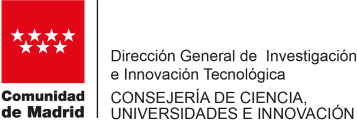
The Assay Guidance Manual is a guide for researchers working in preclinical stages of drug development and basic cell biology. The manual is an updated review of all critical aspects for design, development and optimization for in vitro and in vivo assays used to validate a drug [1]. The design of effective and reliable protocols for cellular assays is critical for the collection of accurate and reproducible results. A well-designed protocol can ensure that the experiment is well-controlled, that the cells remain healthy and viable throughout the assay, and that the results obtained are valid and reliable.
Assay design is critical for obtaining the right results to answer researcher questions. The use of biochemical, cellular or in vivo assays can offer insights at different project stages. Various experimental techniques can be valuable to evaluate a determined effect in cell biology, being ELISA, flow cytometry or fluorescence microscopy some of the most popular approaches. The study of intracellular mechanisms of molecular physiology in living cells is growing due to the translatability of results to clinical stages [2]. Experience in assay design will help to ensure that proper control conditions are used with robust statistical significance in an automated and miniaturized experimental setup. Assay design in a cost-effective manner can also help to reduce assay development and optimization, which are often very demanding and time consuming.
In the fast-paced environment we currently live in, we need the best tools to remain competitive. Experienced researchers and service providers can be consulted to assist researchers by designing assay procedures, conducting pilot studies, assay development or even screening campaigns. Reliable and effective reporting will support decision making in a fast and comprehensive manner.
Contact A4cell to design and conduct intracellular living single-cell analysis with our state-of-the art platforms and expertise on the disruptive lab-in-a-cell devices based on SPAchip® technology.!

[1] W. Buchser et al., “Assay Development Guidelines for Image-Based High Content Screening , High Content Analysis and High Content Imaging,” in Assay Guidance Manual -Markossian S, Sittampalam GS, Grossman A, et al., editors. Bethesda (MD): Eli Lilly & Company and the National Center for Advancing Translational Sciences; 2004-., no. Md, 2014, pp. 1–62.
[2] X. M. Hu et al., “Guidelines for Regulated Cell Death Assays: A Systematic Summary, A Categorical Comparison, A Prospective,” Front. Cell Dev. Biol., vol. 9, no. March, pp. 1–28, 2021.
nnnnnnnnn






